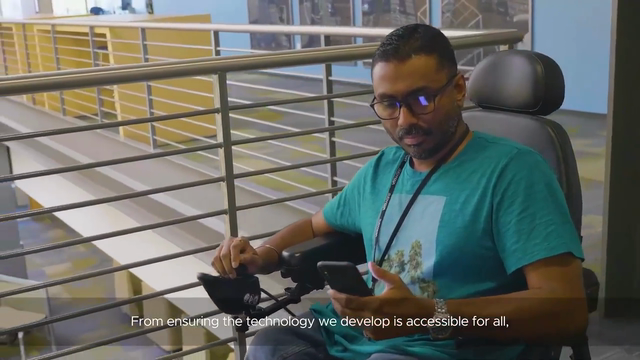Re-Thinking Disability in Tech: How Workplace Inclusion Can Drive Growth
By Craig Dobson
I truly believe that the vast majority of tech firms want to do a better job of supporting workers with diverse needs. DEI initiatives are proliferating across our sector, and not before time.
But when it comes to disability, we are still a long way from true representation.
I’m glad that we’re making progress. In the U.S. for example, VMware's self-identification rate of employees with disabilities is 3.2%, up from 1.8% in 2019. But that’s far short of the U.S. population-wide figure of 18%.
Today, on the UN’s International Day of Persons with Disabilities, it’s time for all of us to ask what we can do to increase the rate of change.
The answer, I believe, is to fundamentally re-frame the way we think about disability in tech.
Inclusion is, of course, a worthy goal in its own right. But bringing more people with disabilities into the workforce shouldn’t just be seen as a noble cause; it’s not something to be bestowed.
The reality is that fostering the inclusion of people with disabilities benefits everyone who works in tech – and, ultimately, gives companies a competitive advantage.
We know, for example, that firms that demonstrate leadership on disability employment and inclusion are outperforming those with more modest achievements in this area.
An Accenture study of 140 US companies participating in the Disability Equality Index found that those in the index’s top tier achieved double the net income and 30% higher economic profit margins over four years than companies ranked lower on the index.
It makes sense: companies that select staff from a larger pool of candidates are likely to enjoy superior outcomes. And as well as raw intellect, people with disabilities may have faced more barriers in life which have led to them developing exceptional grit and determination, which makes them formidable employees.
Meanwhile, end-users are increasingly demanding accessibility from the tech products and services they use.
Energy and Innovation
I think the biggest innovations in accessible tech are still to come. But I’m happy to say that VMware is already devoting considerable energy to this area.
In 2019, VMware partnered with Singapore’s Association for Persons with Special Needs (APSN) for an Ideas Hackathon to create an app to help the association’s students tackle the challenges of social, numeracy, and vocational skills, and to make Singapore itself more inclusive.
The winning “Connect Us” pitch aimed to provide a social networking platform for the association’s students, alumni, and potential employers to connect. Further developed by the team with assistance from VMware, it made its debut as the APSNLive app later that year at vFORUM Singapore.
The following year, in February 2020, we kicked off our first-ever Accessibility Week with a summit followed by an accessibility hackathon. Five different countries, six different business units, and nine different products were represented.
Ten concepts were developed during the hackathon, including a walk assistant application for Blind/Low Vision; programming that opens doors with the twist or tap of your smartphone; and Intelligent Wheelchair Object Awareness.
The winning idea, opening doors with your phone, was integrated into our VMware Workspace One Access product.
These hackathons have been a team-building triumph. We saw how passionately our employees feel about disability inclusion and received enormously positive feedback from staff who were grateful to be playing their part.
But VMware is doing plenty more: for example, we recently completed the roll-out of three largely accessible tools, Fusion, Workstation, and Player, with more to come.
In 2020, we launched a Disability Power Of Difference (POD) community which has since rolled out a series of awareness-building learning courses and partnered on our first-time submission to the Disability Equality Index.
A Path Forward
These initiatives dovetail with our broader Equity and Trust commitments within our 2030 Agenda, which we hope will bring us very close to a truly representative workforce and, ultimately, strengthen our company.
In August this year, VMware joined the Valuable 500, a global business collective that is igniting systemic change and unlocking the business, social and economic value of more than 1 billion people with disabilities around the world. Our CEO, Raghu Raghuram, committed to building disability inclusion into VMware’s leadership agenda.
We are striving not to become complacent. Creating a more inclusive workplace for those with disabilities – and encouraging others to do the same – will require sustained effort and even greater integration of accessibility into our products, services, and culture.
DEI, and particularly disability inclusion, must be integral to the way we in the tech sector move forward as an industry. As individuals, we can all play our part by learning more about disability as an aspect of diversity and deepening our understanding of disability inclusion. Because without disability-inclusive policies, no tech firm will be able to attract and retain the talent it needs to thrive in the years to come.



